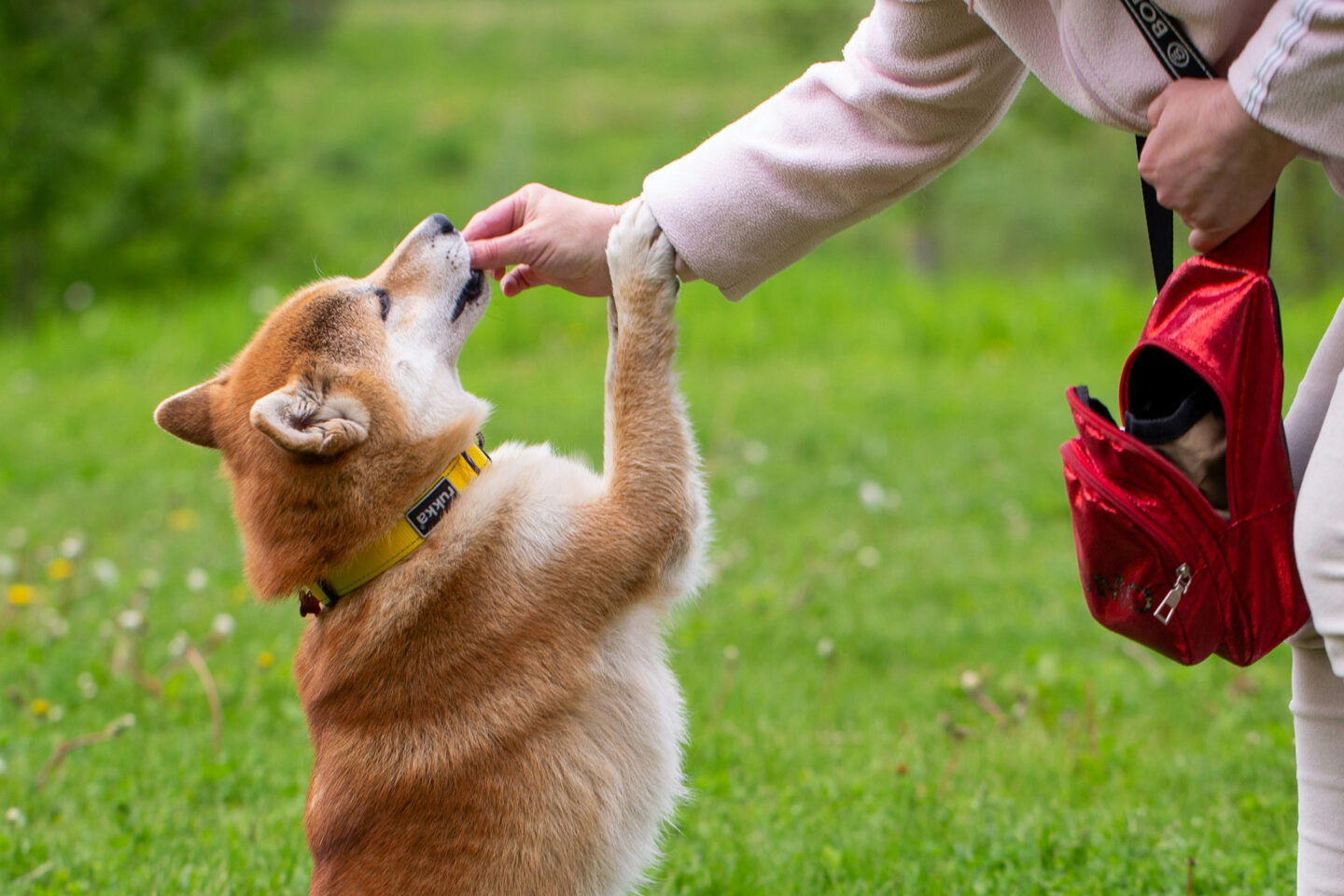What is a dog trainer?
Dog trainers either work directly with dogs or people with the intent of teaching new behaviors and/or changing existing behaviors. A trainer’s education and experience don’t necessarily mean they use the most humane, up-to-date methods or can fix problem behaviors. Before seeking assistance, we recommend that you inquire about their methodologies and obtain references. Anyone can call themselves a dog trainer. For the safety and well-being of your dog, do your research before hiring them!
Training Methodologies
Training should be an enjoyable experience for both you and your dog. There are many ways to train a dog, and like all living beings, dogs have their own learning style and preferences for rewards. Most dogs enjoy working for things like food, play, and petting rather than techniques that rely on fear or pain to stop undesirable behaviors.
We encourage you to look for a trainer who primarily uses reward-based methods. Trainers who promote physical force techniques should be avoided. High levels of punishment carry significant risks, including inhibiting learning, increasing fear, and potentially provoking aggression. Avoid techniques using alpha rolls or dominance theories.
There are times when punishment may be necessary to extinguish behaviors or for the safety of others involved in the training session. The use of punishment:
- Should not be used as a first-line approach. Reward-based training shows the animal what behaviors are expected and how doing them can eliminate the need for punishment.
- Should only be used by a trainer who can explain why they are using this method and explain the possible adverse effects if incorrectly applied.
- Must be perfectly timed so the dog understands why the negative consequence is being applied while pairing it up with the unwanted behavior.
- Should be taught to the owners in one-on-one sessions to ensure that the owner performs the techniques correctly. A general rule of thumb, if the punishment needs to be applied more than 3 times, it is ineffective and should be stopped.
The Classroom Setting: Good Teaching and Coaching Skills
Good trainers explain what behavior they are teaching and demonstrate it so students have a clear understanding of how to perform the task on their own. In a class situation, ample time to practice with individual coaching is necessary to achieve success. Good coaches are personable and respectful of both you and your dog.
Ask to observe a class before attending. Everyone, dogs and humans alike, learns differently and has different needs. Teaching styles vary from trainer to trainer. It is important for you to make sure their teaching style meets your needs.
Also, watch the students and their dogs. Are they having fun or looking stressed? Are dogs’ tails up and wagging or down and tucked? Are the people talking with their dogs in a happy, upbeat voice, or are they scolding or yelling at them? Talk to current students—are they enjoying the class and feel that their dog is learning? If a trainer does not allow you to observe a class, ask yourself (and the trainer) why.
A good trainer will take care to protect the dogs in a class situation. They should have vaccine requirements for the dogs and should discourage owners from bringing sick dogs to class.
Problem behaviors
When dealing with problem behaviors, a professional trainer (www.ccpdt.org) should feel comfortable collaborating with your veterinarian and should know when to seek help from other professionals if the case is above and beyond their level of expertise.
Sudden changes in behavior may be caused by an underlying physical problem. A skilled trainer may recommend a trip to the vet for testing to rule out any possible medical disorders. The veterinarian may consider adding medication to the dog’s behavior modification plan once the dog’s situation has been assessed. Unless a trainer is a veterinarian, they do not have the medical background to recommend specific medications or to assess the possible risks and benefits of using medications in individual animals.
Continuing Education
Look for a trainer who demonstrates continuing education by keeping up to date with new training theories and methods, attending workshops and conferences.
Respect for Humans
Do you feel comfortable doing whatever the trainer asks you to do to your dog? If the trainer tells you to do something to your dog that you believe will cause you or your dog undue harm or distress, ask them to explain why they recommend that technique, what the potential drawbacks of the technique are, and how these will be addressed should they occur. Alternatively, you could ask for another option or get a second opinion. Trainers should not force you to use a piece of equipment that you are not comfortable using.
Avoid guarantees
Because of the variable and often unpredictable nature of behavior, a professional trainer will not guarantee the results of training. However, they should be willing to ensure satisfaction with their services.









